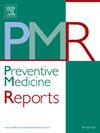Smokeless, not harmless: Understanding Naswar's cardiovascular risks in the northwestern Pakistan
IF 2.4
3区 医学
Q2 PUBLIC, ENVIRONMENTAL & OCCUPATIONAL HEALTH
引用次数: 0
Abstract
Introduction
Tobacco use has a major impact on mortality from coronary artery disease (CAD). Naswar, a smokeless tobacco (SLT) product predominantly used in the northwestern part of Pakistan, has not been explored for its association with CAD. World Health Organization also expresses the need for further studies to thoroughly understand effects of different SLT products on CAD across various populations. This study explores the association between Naswar use and CAD in Peshawar, Pakistan.
Methods
This case-control study recruited 112 CAD cases and 112 controls from tertiary care hospitals between July 2021 and August 2022. Consecutive sampling facilitated data collection through interviews using pre-structured questionnaire. Multivariable logistic regression analyses computed adjusted odds ratios for Naswar-CAD association. Prior ethical approval from the authors' institute, and informed consent from participants were obtained prior to conduction of study.
Results
There were statistically significant differences in age distribution, income levels, house ownership, family history of heart disease, comorbidities, and Naswar usage between cases and controls. Multivariable logistic regression showed that Naswar users (OR: 2.56, 95 % CI: 1.08–6.10), Naswar dip time of five or more minutes (OR: 3.77, 95 %CI: 1.11–12.84), 20+ years of Naswar use (OR: 4.30, 95 %CI: 1.26–14.75), black Naswar (OR: 2.62, 95 %CI: 1.04–6.60), and spitting Naswar saliva (OR: 3.76, 95 %CI: 1.43–9.86) exhibited higher adjusted odds of CAD compared to non-users of Naswar.
Conclusions
This study adds to the body of literature on significant association between Naswar use and CAD, emphasizing the necessity of regulating SLT products like Naswar to mitigate cardiovascular risks.
求助全文
约1分钟内获得全文
求助全文
来源期刊

Preventive Medicine Reports
Medicine-Public Health, Environmental and Occupational Health
CiteScore
3.90
自引率
0.00%
发文量
353
 求助内容:
求助内容: 应助结果提醒方式:
应助结果提醒方式:


